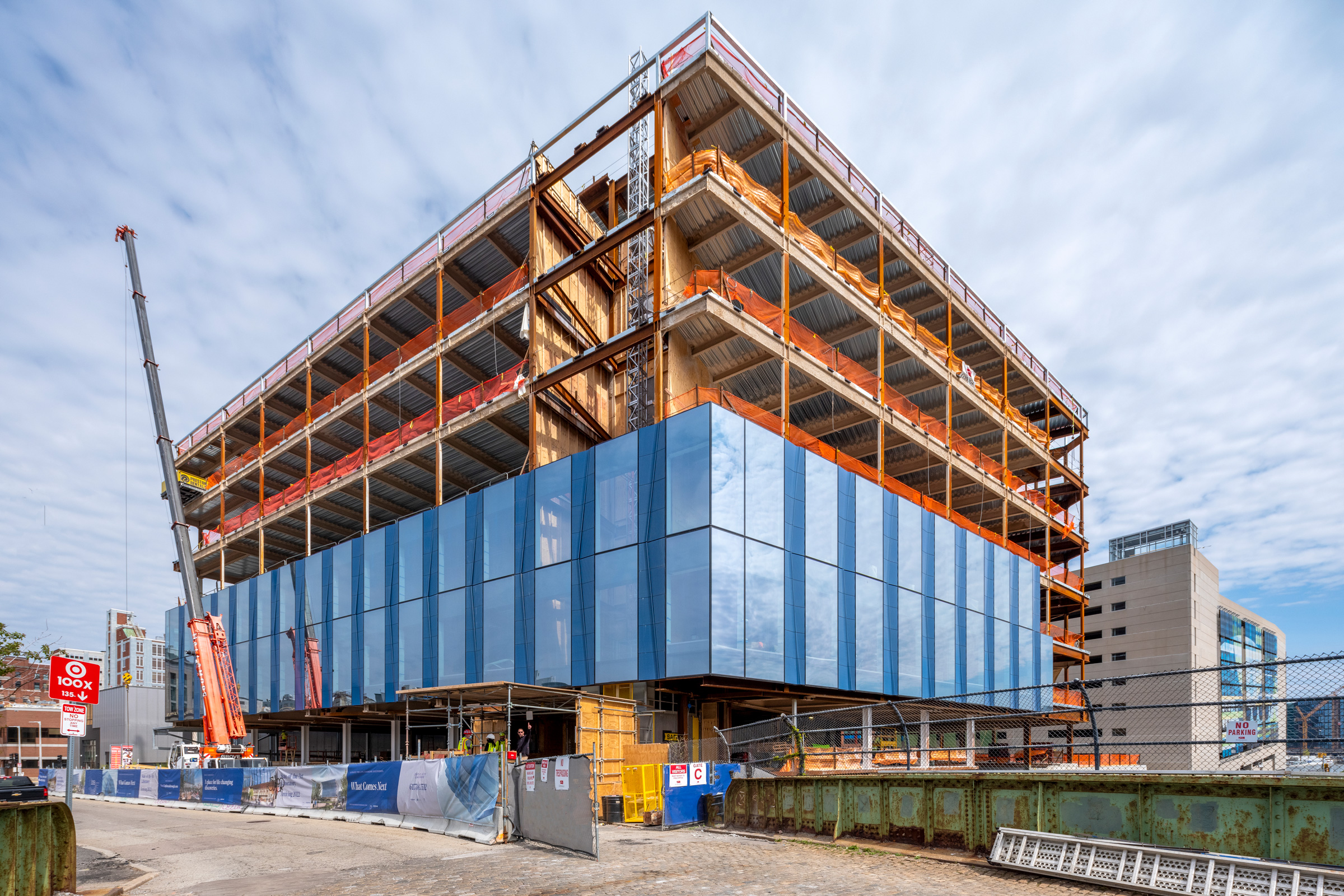Story at a glance:
- Sustainable construction projects have a low environmental impact and prioritize the use of renewable building materials.
- On average, completed sustainable construction projects have lower operating costs and are more energy-efficient than traditional buildings.
- Common sustainable construction techniques include passive design strategies, life cycle assessments, water conservation, xeriscaping, and more.
Sustainable construction aims to drastically reduce a building’s energy consumption and environmental impact throughout all phases of the construction process. In practice this is achieved by carefully considering site factors, implementing passive design strategies, installing energy-efficient appliances, utilizing sustainable materials, and managing waste effectively.
This in-depth look at sustainable construction explores the importance behind the sustainable design philosophy, its environmental, economic, and social benefits, guiding principles, methods of implementation, and a few practical case studies of sustainable construction in the field.
History of Sustainable Construction
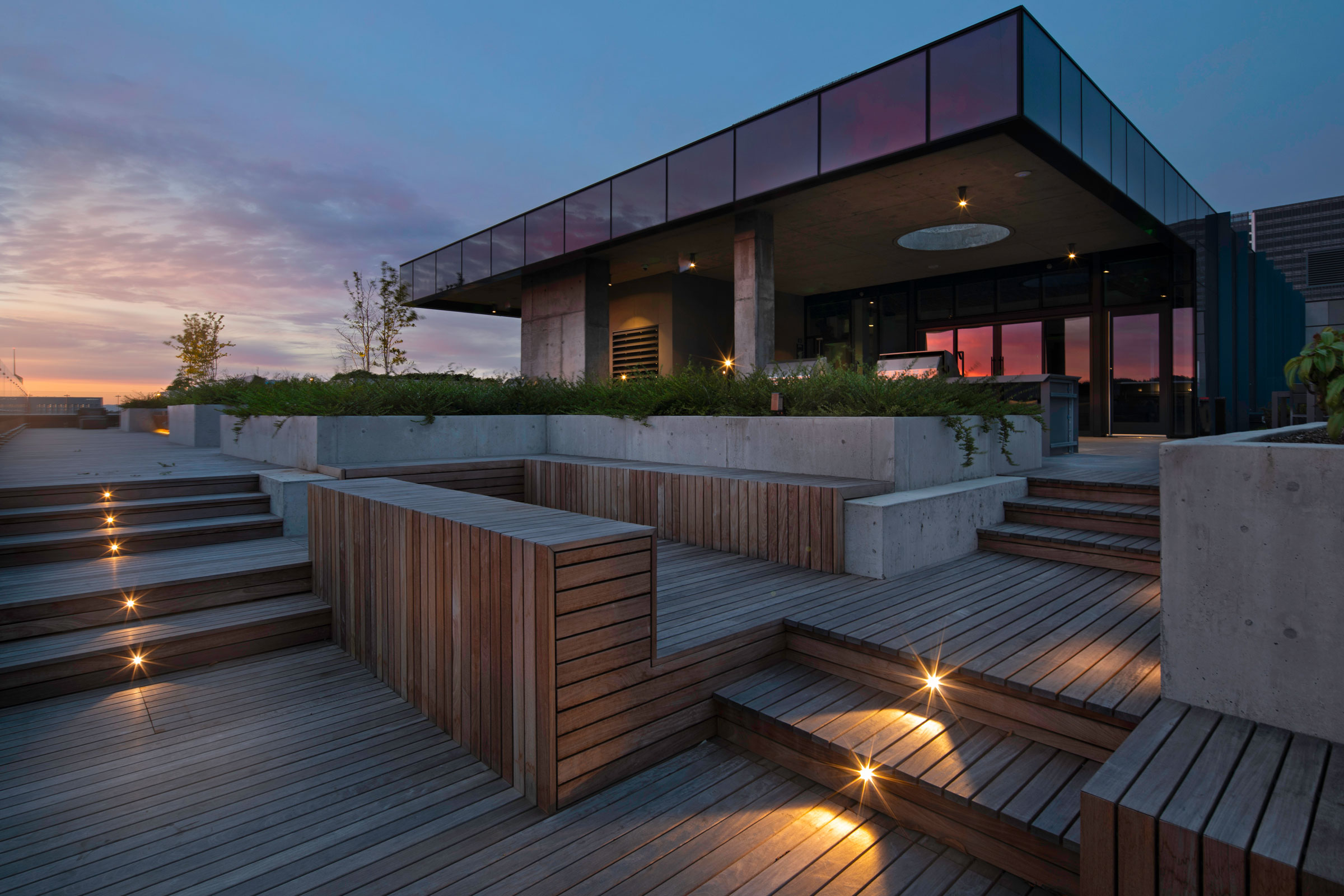
The 5 MLK Boulevard project has been certified for LEED Gold, Salmon Safe, and is the first mixed-use building in the US with a Fitwel certification, according to GREC Architects. Photo by Quanta Collectiv
The basics defining sustainable construction have been around for thousands of years, but sustainable construction is a relatively modern innovation when it comes to being a staunch architectural concept and design philosophy.
The energy crises of the 1970s—which stemmed from oil shortages following the Iraq War—are cited as the impetus behind modern sustainable construction. At the time world leaders were being forced to rethink their countries’ dependency on oil, leading to an increased interest in renewable energy.
Towards the end of the 1980s the idea of sustainable construction was brought back into the spotlight when architect Bob Berkebile petitioned the AIA to adopt more stringent environmentally-conscious measures.
In the early 2000s concerns regarding global warming and greenhouse gas emissions resulted in renewed attempts at transitioning buildings over to clean energy and reducing the amount of carbon produced during the construction and operation of built structures—sentiments that have carried over into our contemporary world.
The Importance of Sustainable Construction
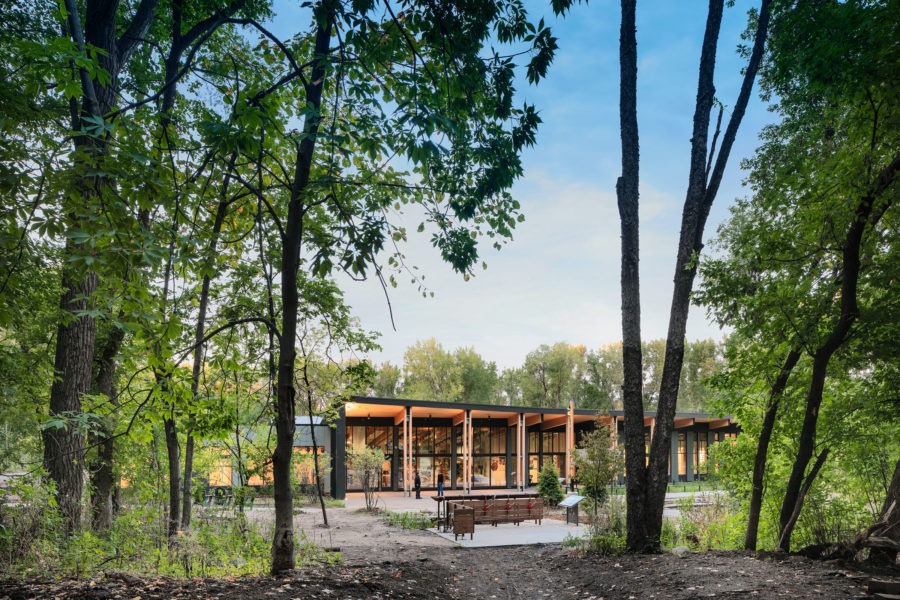
HGA designed the Westwood Hills Nature Center in St. Louis Park, Minnesota to be zero energy. Photo by Pete Sieger
The built environment produces approximately 40% of the world’s carbon emissions, while the construction industry as a whole is responsible for nearly 50% of global resource extraction and produces 30% of the world’s waste, according to a 2019 report issued by the International Energy Agency.
Increased carbon emissions and the destruction of natural resources are two of the most prominent factors contributing to anthropogenic climate change. Because sustainable construction projects seek to achieve low- or no-carbon status and prioritize ethical resource harvesting, they are considered crucial in mitigating the most harmful effects of changing climatic patterns.
Benefits of Sustainable Construction
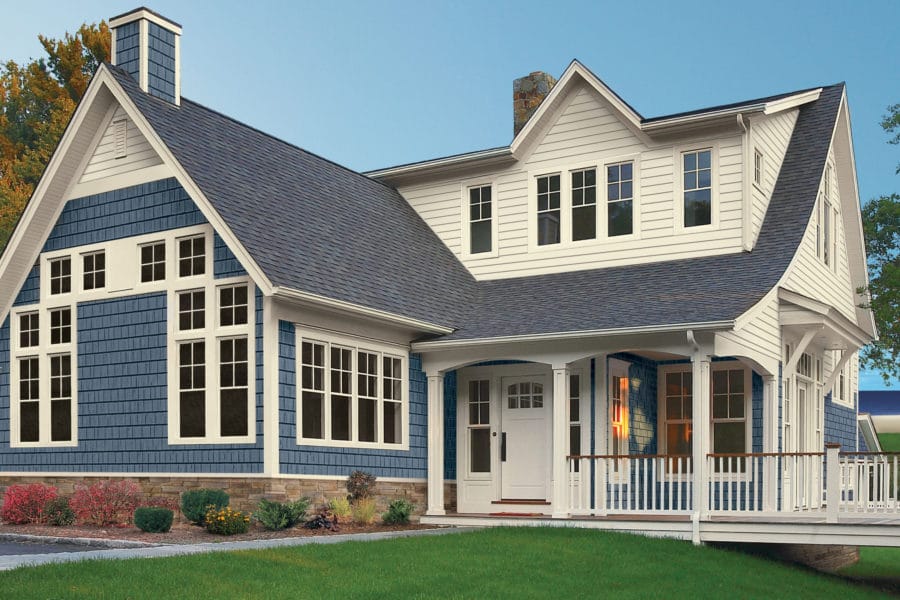
CraneBoard Solid Core Insulated Siding has added insulation to reduce energy consumption and its overall carbon footprint. Photo courtesy of Royal Building Products
Predictably, the most important benefits of sustainable construction have to do with the reduced environmental impact of green building projects compared to their conventional counterparts. These aren’t, however, the only advantages, as sustainable construction also boasts a number of economic and social benefits as well.
Environmental Benefits
To start, let’s take a look at a few of the more obvious benefits of sustainable construction—that is to say, the environmental benefits.
Reduced Carbon Footprint
Compared to traditional construction projects, sustainable buildings have a much lower carbon footprint. This is achieved in large part through the implementation of passive design strategies that help naturally regulate temperature, the installation of energy-efficient appliances, and the use of building materials with low embodied carbon.
Conservation of Resources
Whenever possible, sustainable construction projects seek to avoid utilizing our world’s dwindling non-renewable resources by replacing them with ethically sourced renewable alternatives. In the larger sense, however, sustainable construction attempts to conserve resources—be they renewable or non-renewable—by using fewer resources in the first place.
Reduced Waste
Sustainable construction projects often practice source reduction and incorporate recycled or salvaged materials from other buildings, thereby reducing the amount of demolition waste sent off to landfills. Energy-saving features help reduce energy waste and water conservation measures—such as greywater recycling systems—aid in decreasing wastewater production.
Biodiversity and Ecosystem Health
Lastly, sustainable construction promotes and encourages the stewardship of biodiverse ecosystems through the inclusion of native plant species. Green roofs and living walls seeded with indigenous plants can help provide sanctuaries for crucial insects like bees and other pollinators, whereas xeriscaping—that is, the practice of planting native plants on site—can help recreate and reinvigorate damaged ecosystems.
Economic Benefits
Sustainable construction projects also have their fair share of economic benefits, three of which are outlined below.
Lower Operating Costs
Becase sustainable building projects are typically designed with energy efficiency in mind, they tend to have significantly lower operating costs than traditionally designed buildings. This is especially true if the finished project incorporates some form of on-site renewable energy generation.
Higher Property Values
As a general rule, real estate ventures that boast sustainable features or certifications have higher property values than those without. Sustainable buildings sell for an average of 2.7% higher than their non-sustainable counterparts—and they typically sell faster, too, according to the Federal Home Loan Mortgage Corporation.
Social and Health Benefits
Sustainable construction projects offer a few social and health benefits, too including:
Improved Occupant Health and Comfort
Generally speaking sustainably designed buildings produce fewer volatile organic compounds (VOCs) than traditional construction projects, thereby reducing the likelihood of occupants developing certain respiratory illnesses and cancers over time.
Sustainable buildings are typically more comfortable than their non-sustainable counterparts due to the fact that they regulate interior temperatures better and emphasize proper ventilation.
Community Benefits
When implemented correctly sustainable construction projects have a beneficial impact on the communities they’re built in. Ideally these projects help improve air quality by producing fewer carbon emissions, reduce soil and water pollution by limiting the amount of toxic materials and waste produced throughout the building’s life cycle, and foster a greater connection between humans and nature through the inclusion of green spaces.
Education and Awareness
As sustainable construction projects become more commonplace, it becomes easier to spread awareness and educate people on why sustainable design is crucial in mitigating the negative effects of climate change. As awareness grows it becomes easier to secure funding for future construction projects and can even make it easier to approve sustainable construction projects in the first place.
Core Principles of Sustainable Construction
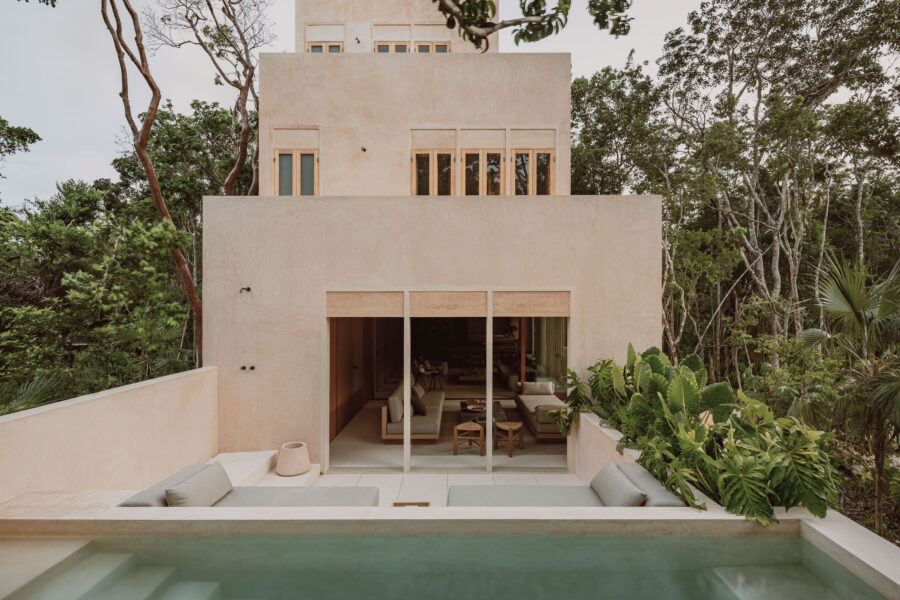
The Candela villa rises up in a pyramidal formation to minimize the jungle footprint and follow strict building and construction practices. The project also follows set limits for the distance of freighted materials. Water treatment facilities and strict waste management protocols are also in place. Photo by César Bejar
Sustainable design manifests in many ways; there is no one standardized approach to building green structures. That being said, these are a few core principles that underlay the basic philosophy of sustainable construction, as outlined below.
Energy Efficiency
First and foremost, sustainable construction strives for energy efficiency wherever possible, as this helps to reduce a building’s overall carbon footprint, lowers operating costs, and helps decrease air pollution. Energy efficiency is often realized in the form of low-energy appliances and systems but also through the application of passive design strategies that reduce the need for mechanical heating, cooling, ventilation, etc. in the first place.
Water Efficiency
Similarly, sustainable architectural projects are often designed to minimize water usage and wastewater production. This is achieved in part by installing water-efficient taps and fixtures but often includes additional measures like rainwater collection, greywater recycling, blackwater treatment, and so on.
Use of Sustainable Resources and Materials

Tantimber is great for cladding, decking, flooring, beams, and more. Photo courtesy of G Wood Products
Predictably, sustainable construction projects also emphasize the use of sustainable resources and materials wherever possible. Ethically sourced renewable resources (timber, bamboo, stone, etc.) with low embodied carbon are favored over materials like concrete and steel. In situations where the use of concrete is necessary, sustainable construction projects typically use a green or low-carbon variety that incorporates construction waste byproducts like fly-ash.
Recycled and reclaimed materials—particularly lumber and steel from demolished structures—are also used in sustainable building design whenever possible to mitigate waste production and curtail further resource extraction.
Ensuring Healthy Living Conditions
As previously mentioned, a healthy indoor environment is another integral component of sustainable construction projects, especially when it comes to the occupant’s exposure to toxic chemicals. A healthy indoor space goes hand-in-hand with the use of eco-friendly materials, which typically produce lower levels of VOCs than traditional building materials.
Waste Reduction and Management
Finally, sustainable construction projects seek to reduce waste wherever possible and develop efficient management plans for the waste that is produced. This helps keep construction waste out of landfills, encourages recycling, and reduces the likelihood of soil and water pollution.
Techniques and Methods for Sustainable Construction
Now that we’ve explored the key principles of sustainable construction, let’s take a look at the techniques and methods used to implement them.
Green Building Certifications
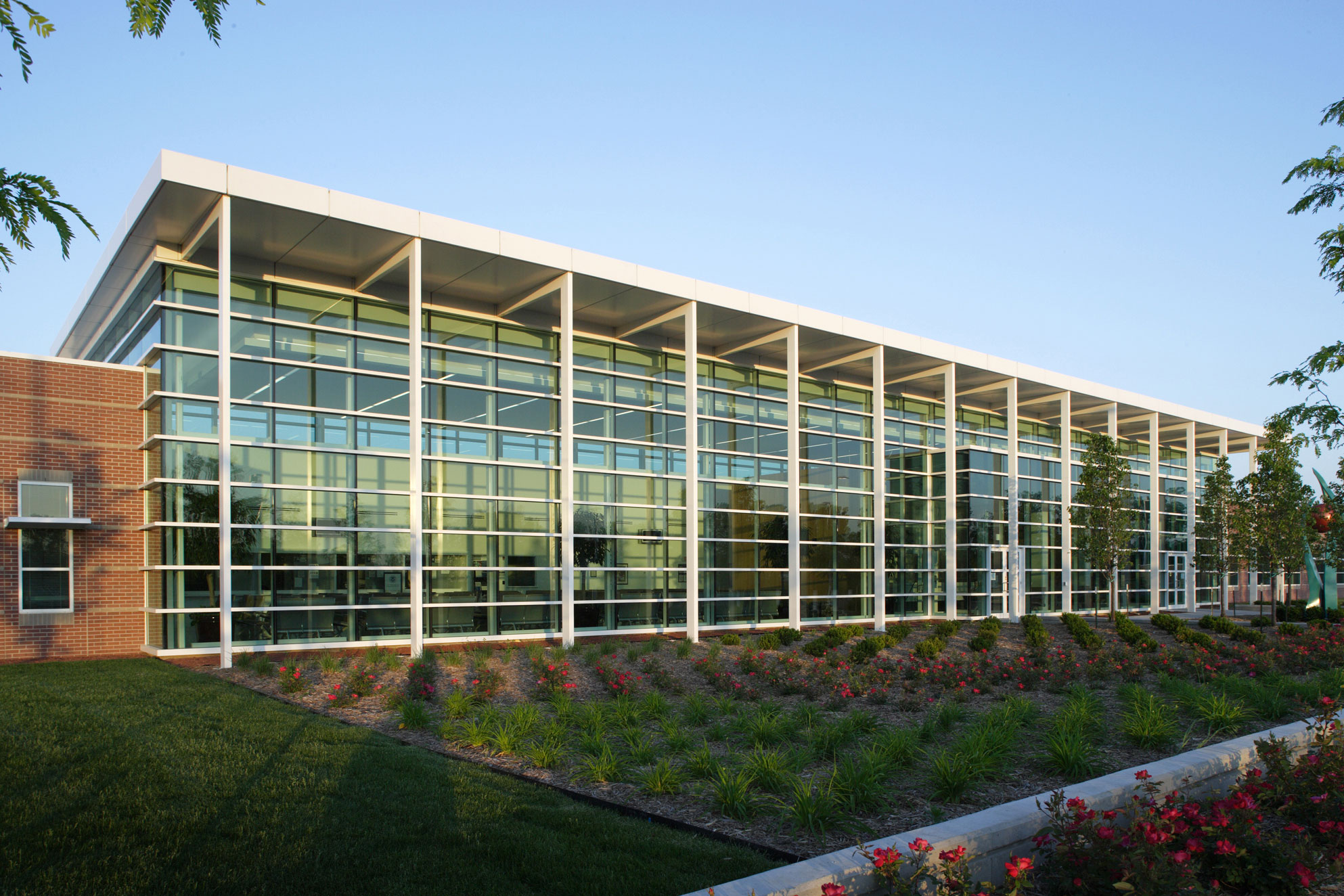
Gensler designed the Department of Homeland Security offices in Omaha—a design/build with Harwood Development that achieved LEED Gold. Photo courtesy of Kessler
When it comes to designing for sustainability, green building certification programs—such as LEED in the United States and BREEAM in Europe—can help provide a guiding framework.
LEED, for example, has specific guidelines for various types of construction projects (healthcare, data centers, school, warehouses, etc.) and offers a variety of credits that projects can earn based on certain sustainability features.
In order for a project to become LEED certified, it must earn at least 40 credits.
Passive Design
One of the most important techniques used in sustainable construction is that of passive design. Passive design strategies are heavily informed by a project site’s immediate climatic and geographic conditions and help keep a building’s interior comfortable without excessive use of mechanical systems.
The Thunderbird Global Headquarters, designed by Jones Studio and Moore Ruble Yudell Architects & Planners, for example, makes use of a high-efficiency building envelope, solar shading, trees, and windows that allow sunlight while blocking solar heat to passively regulate temperatures in the Arizona desert.
In an effort to make the structure’s outdoor spaces more comfortable, Thunderbird features rain gardens and strategically placed shades to passively cool select spaces. “Those rain gardens are creating cooler spaces underneath deeply shaded, outdoor patio spaces,” Shawn Swisher, an architect at Jones Studio, previously told gb&d.
Life Cycle Assessment (LCA)
A life cycle assessment (LCA) is a scientific tool used by architects to determine a building’s environmental impact and energy use throughout all stages of its life cycle, including the procurement of building materials, construction, operation, and eventual demolition.
This is an invaluable tool when designing sustainable construction projects that aim to achieve carbon-neutral or net-zero carbon status and conducting a LCA is crucial to obtaining LEED or BREEAM certification.
Energy Techniques
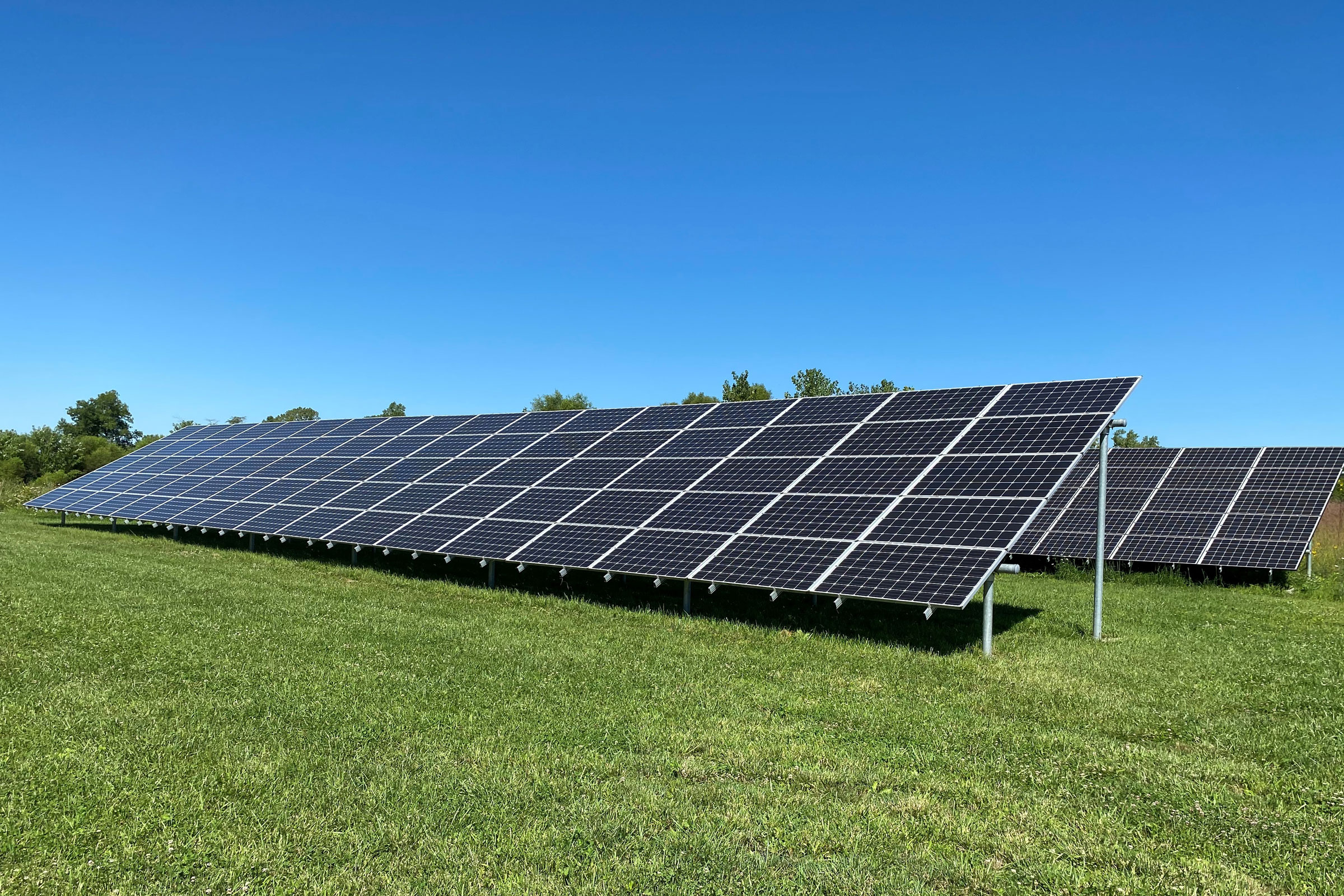
Solar arrays and other alternative energy systems helped the Cope Environmental Center achieve net positive energy usage, producing more energy than it consumes. Photo courtesy of HEAPY
Generally speaking sustainable architectural projects seek to be as energy-efficient as possible, both during the initial construction phase and throughout the completed project’s operational lifespan.
Renewable Energy Sources
While not necessarily a requirement for sustainable construction, renewable energy sources are typically integrated into a project’s design from the very beginning. Of these renewable energies, solar is the most popular, but geothermal, wind, and hydropower are also viable alternatives.
Sustainable construction projects also look to source building materials from companies who utilize renewable energy to manufacture their products, as this helps reduce a building’s overall carbon footprint.
Energy-Efficient Appliances and Systems
Energy-efficient appliances and systems play an important role in sustainable construction projects. In our contemporary world energy-efficient alternatives exist for just about any major appliance imaginable, from refrigerators and dishwashers to washing machines and light fixtures.
In the US any appliance with an ENERGY STAR label is considered energy-efficient according to standards set by the US Department of Energy and the EPA.
Water and Waste Management Techniques
Sustainable construction projects also seek to manage water use and waste as efficiently as possible.
Water Conservation
The most sustainable building projects reduce their water consumption through a variety of techniques. Water-efficient fixtures and plumbing systems are the simplest methods, but many projects take water conservation to the next level by installing rainwater catchment systems—which can be used to supply water to irrigation lines or appliances—and on-site greywater recycling systems.
Waste Management
In order to effectively manage the waste that is produced throughout a building’s life-cycle, sustainable construction projects typically practice source reduction, or the practice of eliminating waste before it’s even created. This is achieved through effective planning, modeling, and ethical resource procurement.
Of course, even the most sustainable construction projects will still produce waste, which is why green building design focuses heavily on using natural, renewable materials that can either be recycled or composted after reaching the end of their operational lifespan.
Land and Ecosystem Conservation Techniques

South Coast Botanic Garden in Palos Verde Peninsula, California. Photo courtesy of Greenscreen
Finally, sustainable construction projects employ a number of strategies to promote land and ecosystem conservation. This helps reduce the structure’s impact on the local flora and fauna to ensure a healthy, functioning ecological community.
Site Selection and Development
In order to make the most efficient use of available land and lessen a project’s overall environmental impact, architects must conduct a thorough site assessment. This gives better insight into how to design in collaboration with existing ecological features rather than against them, reducing the severity of any habitat disruption the completed structure may cause.
Sustainable construction projects also practice ecosystem conservation by limiting the size of development sites. This is often achieved by building upwards or by adapting existing buildings rather than clearing a new site.
Landscaping with Native and Drought-Resistant Plants
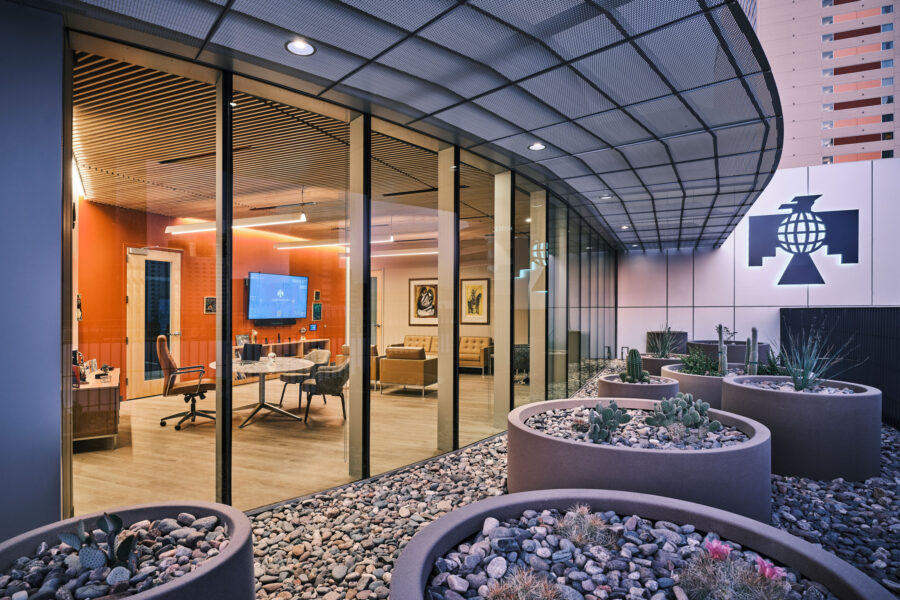
Landscape design creates a comfortable public space in the arid downtown of Phoenix at the Thunderbird Global Headquarters, designed by Jones Studio and Moore Ruble Yudell Architects & Planners. Photo by Inessa Binenbaum
In order to preserve a site’s natural biodiversity, sustainable construction projects utilize indigenous plant species wherever possible in landscaping. In most cases native species form deeper, stronger root networks than the traditional grasses used in landscaping—two characteristics that help mitigate topsoil erosion and promote a healthy soil microbiome.
Similarly, drought-resistant plants are often employed in regions that receive little rainfall. This helps reduce water usage and encourages sustainable water conservation practices.
Common Sustainable Construction Materials
As green architecture becomes more and more popular—and necessary—the amount of sustainable construction materials continues to grow. Some of the most common materials include:
Bamboo
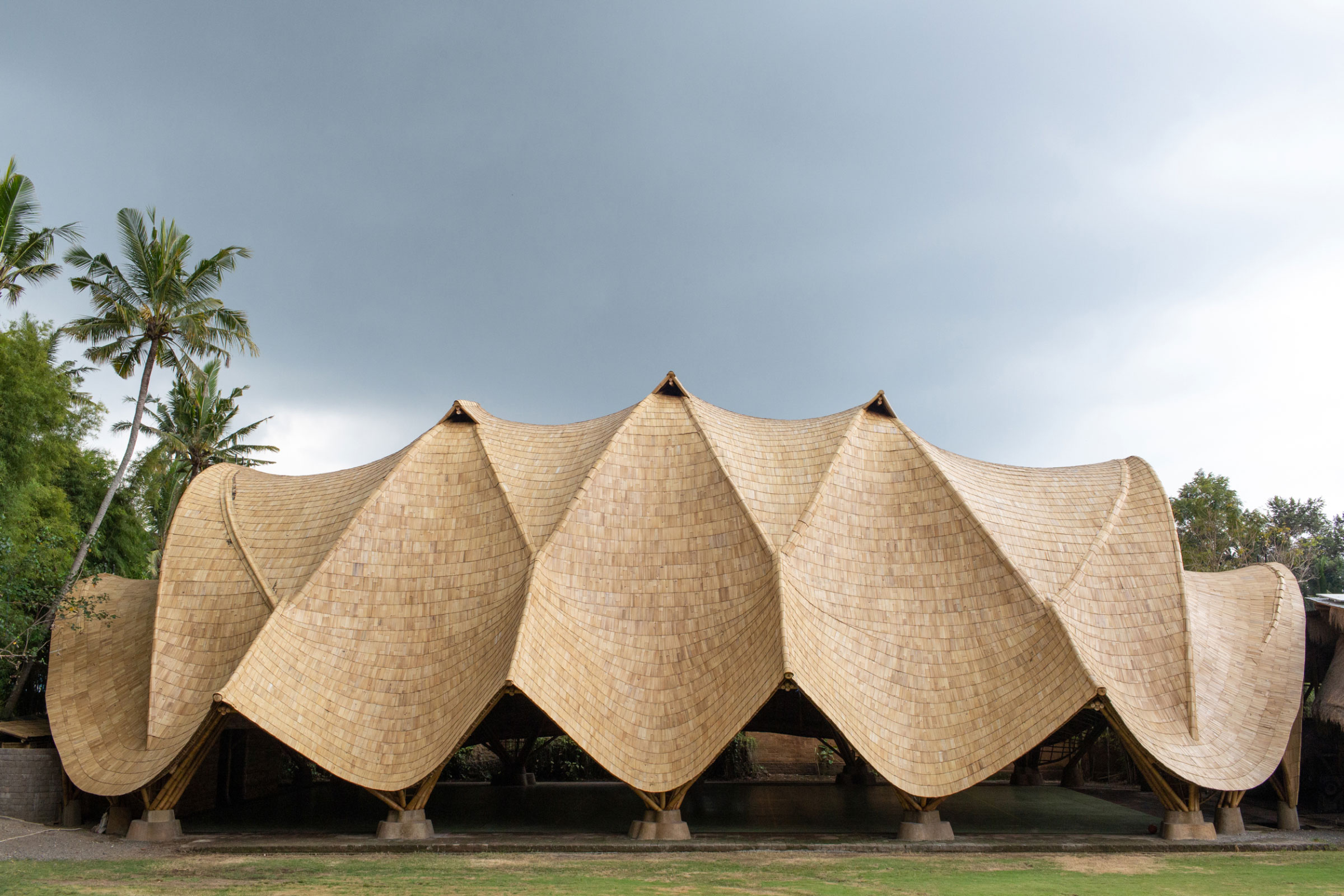
The Green School in Bali, sometimes referred to as the bamboo school, is a private, international school that teaches pre-K through high school. The campus highlights the natural environment and teaches sustainable practices. Photo by Tommaso Riva
Unlike timber, bamboo has an extremely quick regeneration rate. Bamboo culms may be harvested once every five to seven years, as opposed to the 20 years required for hardwoods and softwoods.
Bamboo also absorbs twice as much carbon, requires less water, and requires no fertilizer to grow. Traditionally, whole, halved, or split bamboo poles have been used in construction, but bamboo can also be shredded into fibrous strands and woven back together to form strong planks for flooring or panels.
Straw Bales
In the United States—and particularly in the Midwest—straw bales have been used in construction since the late 1800s in one of two ways. In most cases straw bales are stacked atop one another between a wooden framework and utilized as insulation, as compacted straw has a very high R-value.
Similarly, straw bales can be used to form the walls of a house themselves, in which case they act as both insulation and structural framework. In these instances the bales are covered with a layer of plaster after they are stacked to protect them from the elements.
Straw—which is typically either dried oats, wheat, rice, or rye—is a natural material. It sequesters carbon and grows rapidly, having a low environmental impact.
Cork
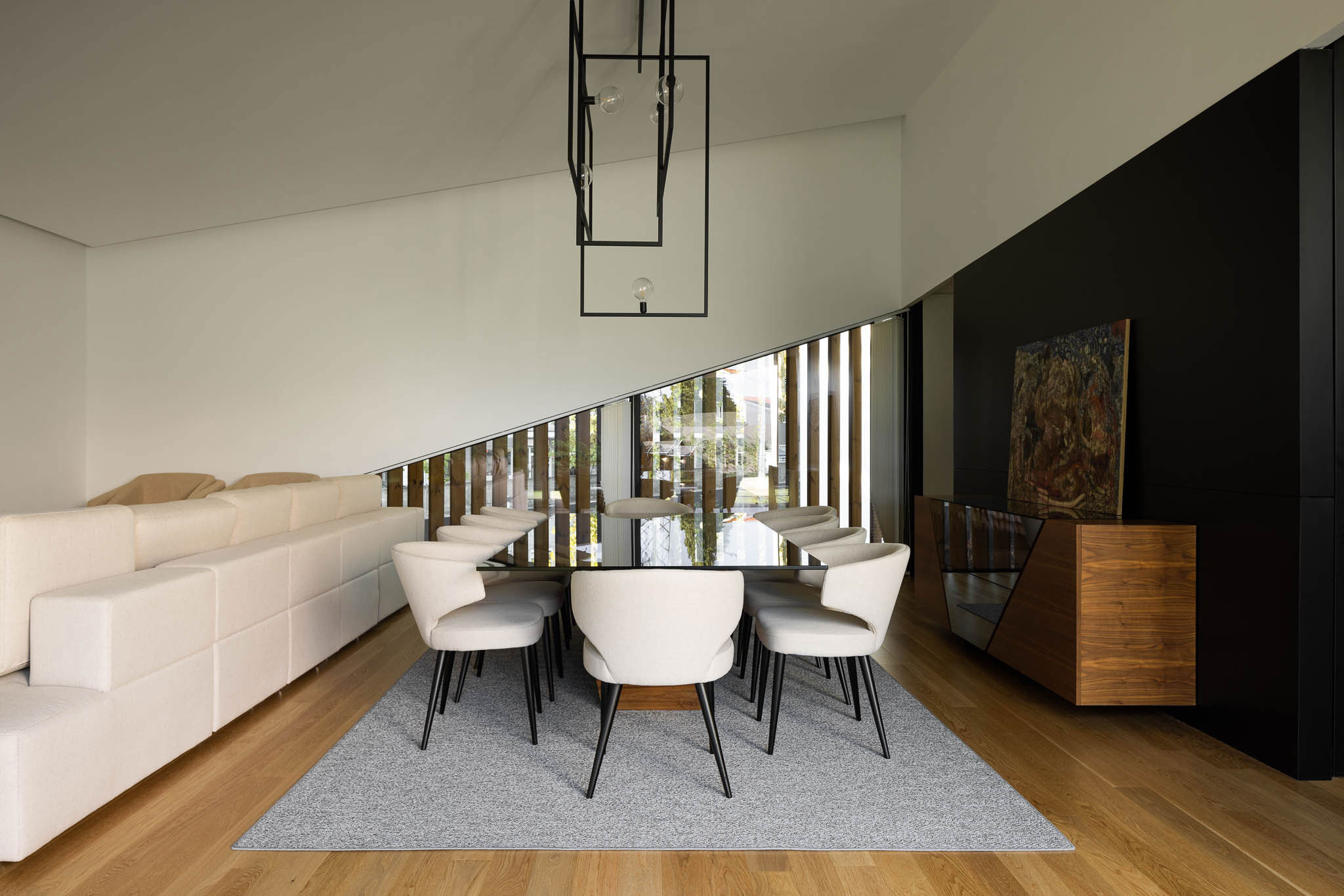
Lustrous flooring made largely of cork creates a cozy feeling. The cork is not only a more sustainable option; it is a natural sound insulator. Photo by Ivo Tavares Studio
Unlike wood or bamboo, cork does not require that the entire plant be harvested—rather, only the bark of cork oak trees is used to create building materials. When collected sustainably cork oak bark can be harvested without harming the tree and using very little energy. Once harvested cork bark sufficiently regrows within a nine-year timespan, meaning a single cork tree can be harvested multiple times throughout its natural life cycle.
After it is collected cork bark is shredded, compressed into sheets, and baked in a kiln to form planks or sheets—of which are then used to create flooring or insulation panels.
Wood
As a naturally renewable resource—one that sequesters carbon throughout its growth cycle—wood is one of the most common environmentally friendly building materials used in sustainable construction.
Not all wood, however, is considered to be sustainable, as certain forestry practices—particularly those used to harvest exotic hardwoods—can actually have an extremely detrimental impact on the local ecosystem. To ensure the wood you’re using is sustainable and ethically harvested, verify that it has been certified by the Forest Stewardship Council (FSC).
Recycled Steel
Despite the fact that steel production is responsible for a not-insignificant amount of greenhouse gas emissions, existing steel is still considered to be sustainable because it can be recycle almost infinitely. Depending on the project recycled steel may be used as is or melted down and reformed into some other building component—the latter of which still produces fewer emissions than manufacturing new steel altogether.
Reclaimed Wood or Brick

Raw and unfinished authentic reclaimed barn wood planks. Photo courtesy of Woodstock Architectural Products
Similar to recycled steel, reclaimed wood and bricks are sustainable in that they prevent construction waste and do not require further emissions be produced before they can be used.
On average reclaimed wood is usually stronger than fresh lumber and is less resistant to warping due to having a lower moisture content. Reclaimed bricks, on the other hand, can be used as is, chipped for landscape use, or even crushed to form aggregate for new bricks.
Recycled Plastic
It’s estimated that, on average, the US produces roughly 40 million tons of plastic waste each year. Approximately 85% of that waste ends up in landfills, where it then sits for years without breaking down. Fortunately a large portion of that plastic can be recycled and used for construction purposes: It can be formed into shingles, mixed into concrete, incorporated into roads in place of asphalt, molded into bricks or tiles, and even used to make recycled-fiber carpets.
Rammed Earth
Created by gradually pouring and tamping down layers of a damp aggregate mixture (usually sand, silt, gravel, clay, and dirt) in between wooden panels or in a flooring mold, rammed earth is an incredibly durable material with a high thermal mass, high compression strength, and an extremely long lifespan.
Due to its widespread availability, ease of procurement, and inherent renewability/recyclability, rammed earth is one of the most sustainable building materials there is.
Hempcrete
As a more sustainable alternative to traditional concrete, hempcrete is created by mixing hemp with lime, pozzolans, or sand. Like any plant, hemp absorbs carbon throughout its natural growth cycle and then continues to store said carbon once it has been processed into hempcrete, making it an extremely environmentally-friendly product. Unlike concrete, hempcrete is fairly lightweight and has high thermal insulation capabilities, making it an excellent material for constructing non-load-bearing walls.
Cross-Laminated Timber (CLT)
A type of engineered wood, CLT is formed by gluing together at least three layers of solid-sawn lumber and is often used as an alternative to concrete.
Due to the perpendicular orientation of the layers, CLT has improved structural rigidity compared to traditional timber and is similar in strength to reinforced concrete despite weighing far less. As long as the wood used to create CLT panels is sourced from ethically-managed forests—such as those certified by the FSC—it is considered to be a sustainable material.
Insulating Concrete Forms (ICFs)
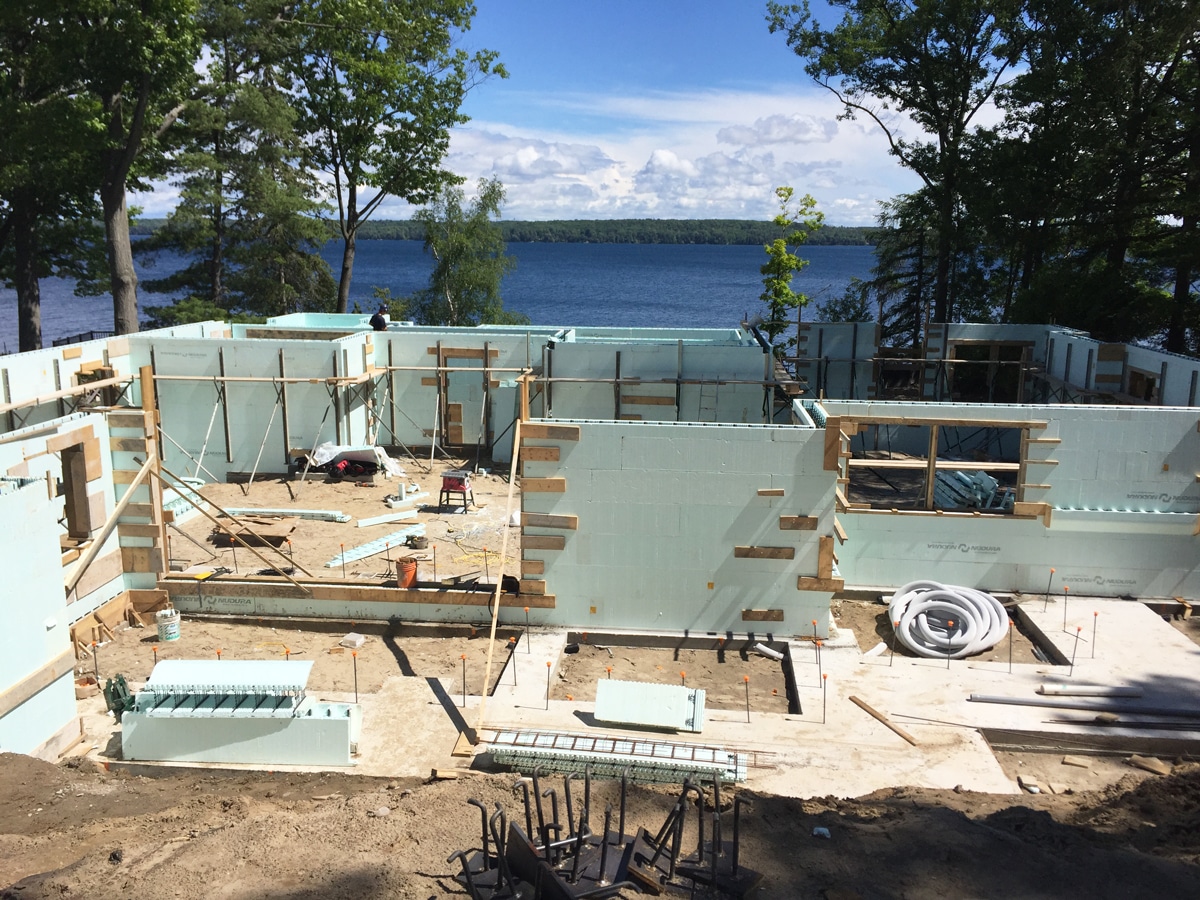
In 2016 the ICFMA commissioned an independent scientific study comparing a wood-framed cavity wall to a standard six-inch core ICF wall. Photo courtesy of IFCMA
Quick to manufacture, durable and easy to install, insulated concrete forms are manufactured by pouring concrete into insulated polystyrene foam blocks. After the concrete cures the polystyrene blocks are left in place instead of removed—ultimately, this gives the wall improved insulating properties compared to traditional timber-frame walls.
ICFs are incredibly strong are expected to last over 100 years, provided they are properly maintained—they also have no trouble withstanding strong winds, which makes them extremely useful in areas where tornadoes or hurricanes are common.
Low-E Windows
According to the Department of Energy, the average building loses 25 to 30% of the energy it utilizes through poorly installed, leaky, or just plain inefficient windows. To combat this low-energy windows may be installed.
These windows typically feature special glazes or coatings to help block solar heat from entering while still allowing natural light to filter through.
Innovative Technologies in Sustainable Construction

Emerging technologies like integrated cloud monitoring, 3D printing, and preconstruction software make achieving sustainable construction goals easier. Photo courtesy of Sage
As the sustainable construction sector continues to grow, emerging technologies like 3D printing, preconstruction software, and integrated cloud solutions can aid architects and designers throughout every phase of the building process.
3D printing, for example, can help reduce material waste by creating extremely precise building components, either off- or on-site. Preconstruction software, on the other hand, gives architects the ability to develop 3D building models that provide accurate estimates of waste production, energy use, and water consumption.
Integrated cloud technologies—such as those offered by Sage—provide an easy way to manage project data in one place, reducing the possibility of errors or miscommunication. Other integrated cloud solutions can even use automated systems to track a project’s energy consumption (amongst other metrics) in real time, making it easier to adjust conditions to meet sustainability goals.
“Advances in preconstruction, cloud, and emerging technologies have opened up a new world of possibilities when it comes to increasing efficiencies and reducing project waste and rework,” Dustin Stephens, vice president of Sage’s construction and real estate practice, previously wrote for gb&dPRO. “As technology continues to advance we will see even more opportunities to optimize the project lifecycle and further minimize construction’s environmental impact.”
Case Studies and Examples of Successful Sustainable Construction
Now that we’ve familiarized ourselves with the basics of sustainable construction, let’s take a look at a few of the most inspiring examples.
Rain Harvest Home
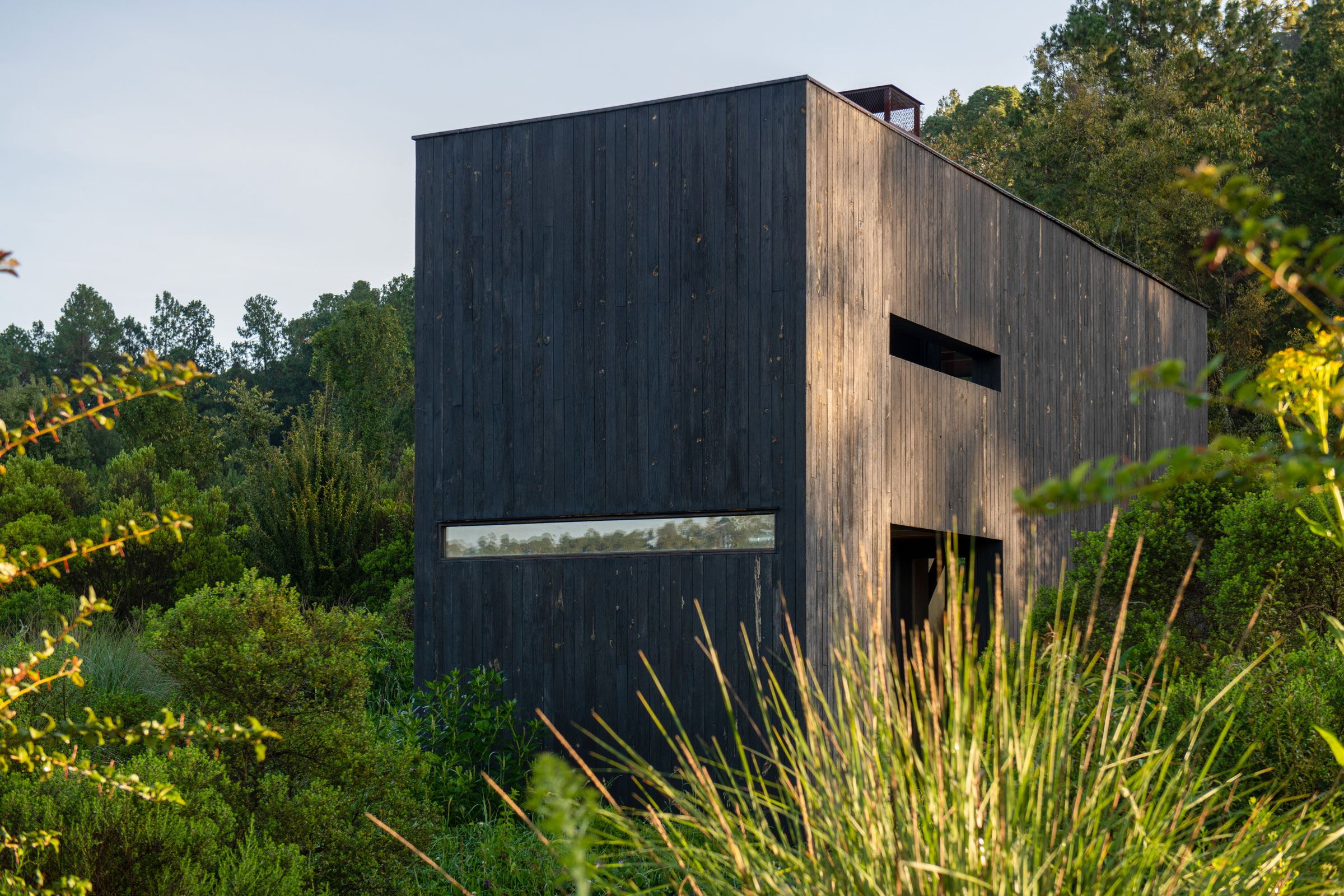
Outside the Rain Harvest Home. Photo by Jaime Navarro
The Rain Harvest Home is an inspiring example of sustainable construction in action. Located in Temascaltepec, Mexico, this beautiful house was designed by Robert Hutchison Architecture (RHA) and Javier Sanchez Arquitectos (JSA).
Rather than build with masonry or concrete, RHA and JSA elected to build the entire Rain Harvest Home out of sustainably sourced wood. “This choice was made with the intention of building as light on the ground as possible and to reduce the carbon footprint of the project,” Robert Hutchison, founder and lead architect of RHA, previously told gb&d.
As the name implies, the three-structure Rain Harvest Home features a gravity fed rainwater-catchment and treatment system that supplies the main residence, studio, and bathhouse with water. A green roof further serves to absorb rainwater and helps regulate interior temperatures.
Westwood Hills Nature Center

HGA designed the Westwood Hills Nature Center in St. Louis Park, Minnesota to be zero energy. Photo by Pete Sieger
Designed by HGA, the Westwood Hills Nature Center in St. Louis Park, Minnesota factors sustainability into every element of its design.
“The building is oriented in plan to take advantage of solar angles and prevailing winds; its roof form opens the building up to views and maximizes daylight to reduce energy use,” Glenn Waguespack, senior project designer at HGA, previously told gb&d. “From a systems standpoint, the biggest contributor to energy reduction is the geothermal wellfield, which uses the earth as a heat source for our radiant and forced air systems; heating loads are dominant in a cold climate like ours.”
In order to reduce the building’s environmental impact even further, HGA planned from the very beginning to make the Westwood Hills Nature Center a zero-energy facility—that is, a building that generates as much power as it uses annually.
Key Challenges and Barriers in Sustainable Construction
Of course, sustainable construction isn’t without its challenges. Some of the most common barriers include:
- Higher upfront costs. Due to limited availability of industry professionals and high competition for sustainable materials, most sustainable construction projects have higher upfront costs than their non-sustainable counterparts.
- Zoning limitations. Use-based zoning regulations can hinder the development of mixed- or multi-use sustainable construction projects.
- Lack of expertise. Despite the growing popularity of sustainable construction, few architects, builders, and contractors have experience with its design principles.
- Lack of awareness and understanding. Within the construction sector as a whole, there is very little awareness as to the benefits of sustainable construction—and to make matters worse, there is very little incentive to learn about them.
- Building codes and regulations. As it stands, there exist very few building codes and regulations for sustainable construction projects, which can make the planning and permit processes difficult.
Role of Government and Policy in Sustainable Construction
There are a few ways in which the government and policymakers can encourage the widespread adoption of sustainable construction practices, such as providing financial incentives, revising national design standards, and requiring that all new construction projects meet LEED (or an equivalent organization’s) standards.
The European Union, for example, is requiring that all public buildings be renovated for improved energy efficiency in order to meet Europe’s long-term net-zero carbon goals. India and the United States, amongst other countries, currently offer tax incentives for buildings that meet LEED certification requirements. The US also provides financial assistance in the form of loans and grants for certain projects that seek to implement renewable energy sources.
Sustainable Construction and the Future of Urban Planning
Historically urban planning has been at odds with sustainability, largely due to cities being designed around automobiles and single-use zoning standards. Sustainable urban planning requires that cities and towns do the following:
- Prioritize pedestrian infrastructure. In order to reduce carbon emissions and urban air pollution, new development projects must be designed with walkability in mind.
- Offer multiple public transit options. Similarly, interconnected public transit networks reduce dependency on private vehicles and drastically reduce the amount of greenhouse gas emissions.
- Preserve green spaces. Green spaces like parks, hiking trails, and the like help regulate temperature, absorb carbon, and improve people’s mental health.
- Encourage mixed-use projects. Making it easier to approve and construct mixed-use buildings helps limit urban sprawl and makes adaptive reuse projects more feasible.
- Transition to renewable energy. By requiring that new development projects implement renewable energy, urban centers can reduce their carbon emissions and conserve resources.
- Incentivize energy efficiency. Cities and towns can further encourage sustainable construction practices by incentivizing energy efficiency and providing financial assistance for energy-efficient upgrades to existing buildings.
The Road Ahead for Sustainable Construction
Due to an increased understanding of how the built environment contributes to anthropogenic climate change, the adoption of sustainable construction practices has become increasingly necessary. Governed by five key principles—energy efficiency, water efficiency, use of sustainable materials, healthy living conditions, and waste management—sustainable construction offers a variety of environmental, economic, and social benefits.
Moving forward world governments, policymakers, and urban planners have an important role to play in removing the barriers around sustainable construction so that green building projects are easier to realize on a large scale. Emerging technological innovations such as preconstruction software and cloud data management can also help to simplify the sustainable construction process.
All in all, sustainable construction is an important component in mitigating the worst effects of climate change and helps create a healthier world both for ourselves and future generations.

